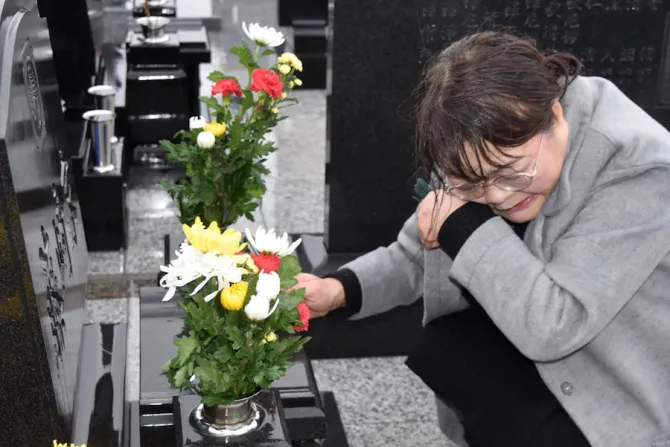Tokyo, Japan, Oct 30, 2019 / 12:02 pm
Pope Francis' three-day visit to Japan in November will include a meeting with people affected by the country's "triple disaster," when a major earthquake and subsequent tsunami on March 11, 2011 triggered a meltdown at the Fukushima Daiichi nuclear power plant.
An estimated 19,000 people died and 150,000 were displaced by the tsunami, which was triggered by a magnitude-9 earthquake under the ocean off the coast of Japan. In the wake of the nuclear disaster that followed, considered the worst since Chernobyl in 1986, another approximately 150,000 people were displaced in mandatory evacuations. Many of these people have not returned home.
Francis' meeting with victims will take place Nov. 25 at the Bellesalle Hanzomon event center in Tokyo.
Following in the footsteps of Pope St. John Paul II, who traveled to Japan in 1981, Francis will also make stops in Hiroshima and Nagasaki, under the theme "Protect all life."
He will deliver a message on peace at the Hiroshima Peace Memorial, and he will give a speech on nuclear weapons at the Atomic Bomb Hypocenter Park in Nagasaki.
According to Cardinal Pietro Parolin, Vatican secretary of state, the issue central to the papal trip to Japan will be an appeal for nuclear disarmament.
"I believe that in Japan, the Holy Father will insist, above all, on the theme of disarmament," Parolin told journalists Oct. 29. "This insistent appeal just to take disarmament seriously. Because today we are in very real danger, we are in danger because the tendency is to re-arm ourselves..."
Another significant moment of the papal trip will be a visit to the site of the execution of the 26 Martyrs of Japan, who were killed for their faith by crucifixion in 1597 in Nagasaki.
Francis will pay his respects to the martyrs at the monument in their honor on Nishizaka Hill.
Catholics make up less than 0.5% of the population in Japan. Christianity was first introduced to the country in the 16th century by Catholic missionaries, most notably St. Francis Xavier. In the years that followed, Catholics in Japan suffered waves of fierce persecution.
In Tokyo, Pope Francis will also celebrate Mass at the Tokyo Dome and meet with young people in the capital city's Cathedral of Holy Mary.
On Nov. 26, the final day of the trip, he will visit the Jesuit-run Sophia University.
Before arriving in Japan, Pope Francis will also spend three days in Bangkok, Thailand, where he will meet King Maha Vajiralongkorn at the Amphorn Royal Palace.
In Thailand, the pope will also have several interreligious meetings: one with Christian and other religious leaders and another with the Supreme Patriarch of Thailand, who is the leader of the order of Buddhist monks in the country.
He will also celebrate Mass in the National Stadium and in the Cathedral of the Assumption.
The pope's visit to Thailand is in commemoration of the 350th anniversary of the Vatican Mission to Siam in 1669.
(Story continues below)
The small Catholic community in Thailand, less than 0.5% of the mostly Buddhist population, has been celebrating the anniversary throughout 2019.



